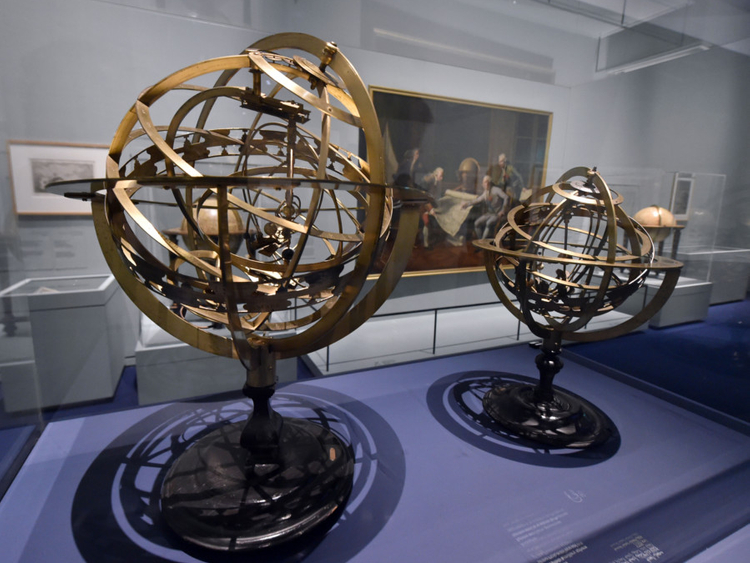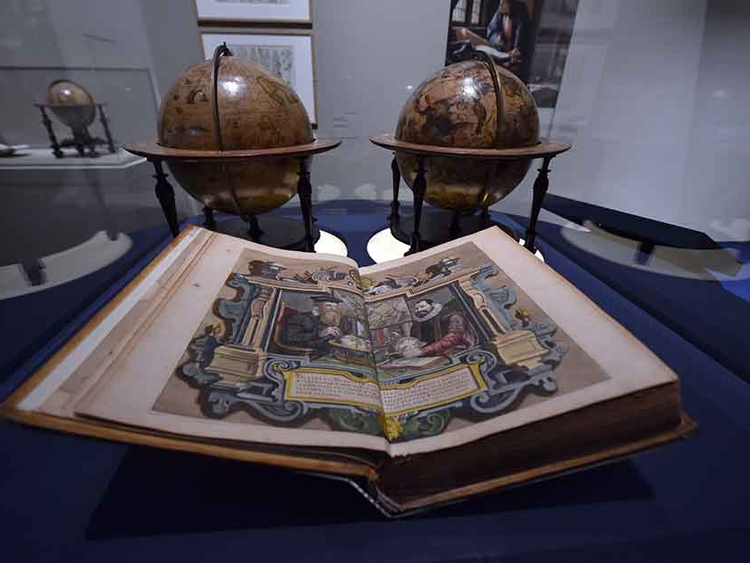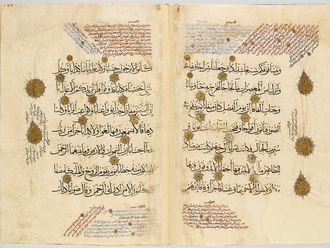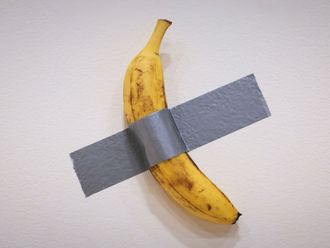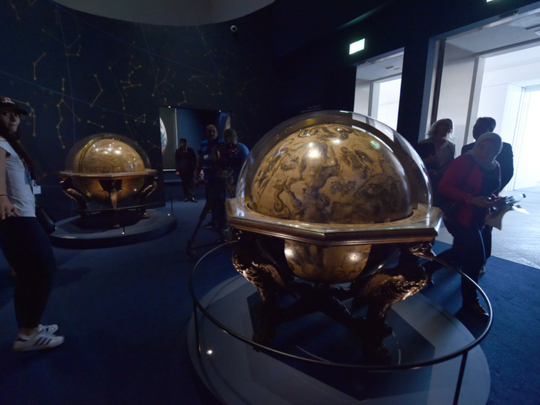
Abu Dhabi: The study of the universe and its cosmology has always held a special significance in the Arab and Islamic world, and it is this interest that is being explored at the Louvre Abu Dhabi’s second temporary exhibition.
Entitled ‘Globes: Visions of the World’, the exhibition features 170 items that depict the representation of our world and the universe over a 2,500-year period, with a focus on the development of globes, maps, astrolabes and cosmological treatises during this time.
It has been curated by the Bibliotheque nationale de France (BnF), the French national library, and is set to open to public viewing on Friday (March 23).
“This exhibition pays tribute to the scientific minds and researchers who sought to understand the universe and our position in it, thus delving into a variety of sciences, including geography, maths, astronomy, philosophy and cosmology,” Manuel Rabate, director of Louvre Abu Dhabi, announced at a press preview on Wednesday.
The preview was attended by French Ambassador to the UAE Ludovic Pouille, and members of the media.
“It is essential to understand that the Western vision of the world is not universal, and it should be confronted by other visions and ideologies, as is wonderfully depicted in this special exhibition. Its theme is also symbolic since it is being displayed in the UAE, at this historical crossroads between the East and West,” Pouille said.
Francois Nawrocki, chief curator of the BnF and deputy director of the Sainte-Genevieve Library in Paris, added that the influence of Arab scientists in the study of the universe is likely to surprise many people in the West.
“Their contributions have largely been forgotten, and we expect that this exhibition, when displayed in France next year, will be educational to visitors there,” he told Gulf News.
A quick preview
The exhibition is organised in 10 overlapping circular rooms, in an exhibition space separate from the Louvre Abu Dhabi’s permanent galleries.
As they walk through, visitors will encounter the earliest known celestial sphere, found in eastern Turkey and dating back to 2nd century BC, as well as the scientific treatises by Greco-Roman astronomer, Claudius Ptolemy. Those with a keen eye will be able to spot the 15th century globes that do not depict the United States — an as-yet-undiscovered continent then — and note the 10th century contributions of Islamic scholars like astronomer Abdul Rahman Al Sufi.
As the use of globes spread from the West to the Arab World and off to the East, many objects also portray the intermixing of cultures and the transfer of knowledge. So a box decorated with planetary symbols that was produced in either 13th century Egypt or Syria depicts Venus playing the oud, while an armillary sphere stands in a 17th century tapestry of Chinese astronomers.
Later galleries include paintings that centre on famous expeditions and voyage. The now-famous Earthrise photo, taken in December 1968 as the Apollo 8 orbited the moon, is also on display.
The exhibition will run until June 2. Those who visit before April 7 will also be able to experience the Louvre Abu Dhabi’s first temporary exhibition — From One Louvre to Another: Opening of a Museum for Everyone — which chronicles the birth of the Louvre in Paris, known to be the world’s largest museum.


